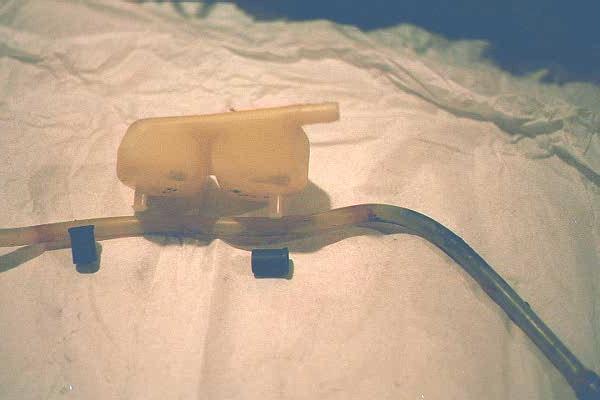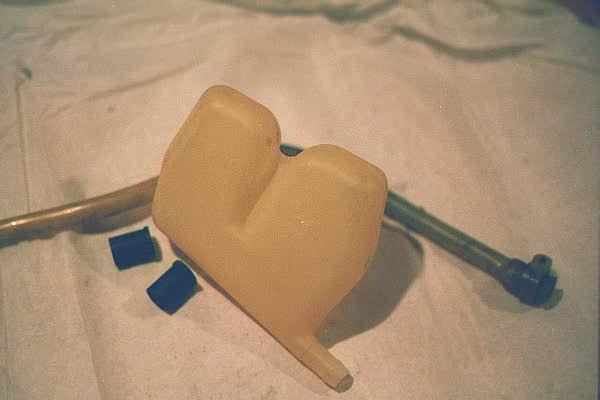Pictured below are an original '71-'72 bus dual circuit master cylinder reservoir, the plastic tube that extends to the fill resevoir and two special rubber seals that seal the tube to the master cylinder reservoir and fill reservoir nipples:


The rubber seals will age and crack, and brake fluid will seep, damaging paint. Replacement seals are part # 211 611 833D.
When removing the reservoir for the replacement of a master cylinder, be careful not crack it (refer to procedure in the Bentley manual for proper removal). There are different variations of this reservoir for brake systems with and without a power servo/booster (not all post '71 buses in Europe had the booster). '73-'79 buses with vacuum assist power booster share the same reservoir (part # 211 611 313J), but the original '71-'72 bus reservoir used on master cylinders that work with a booster has a narrower spacing between the plastic nipples at its base. This smaller type reservoir is no longer made. Most likely, if you are replacing a master cylinder on a bus with a power booster, you will receive a '73-'79 master cylinder and might need to buy a new later style reservoir (still available) to fit.
When installing a new master cylinder, use two new reservoir base grommets (211 611 817A) and be sure that your new master cylinder has its O-ring in place before installing it on the power booster.
A commonly used method for cleaning reservoirs: If you are able to re-use your old reservoir but need to clean residue on its inner wall, use solvent and small ball bearings, seal the ports and shake until the grunge loosens.

